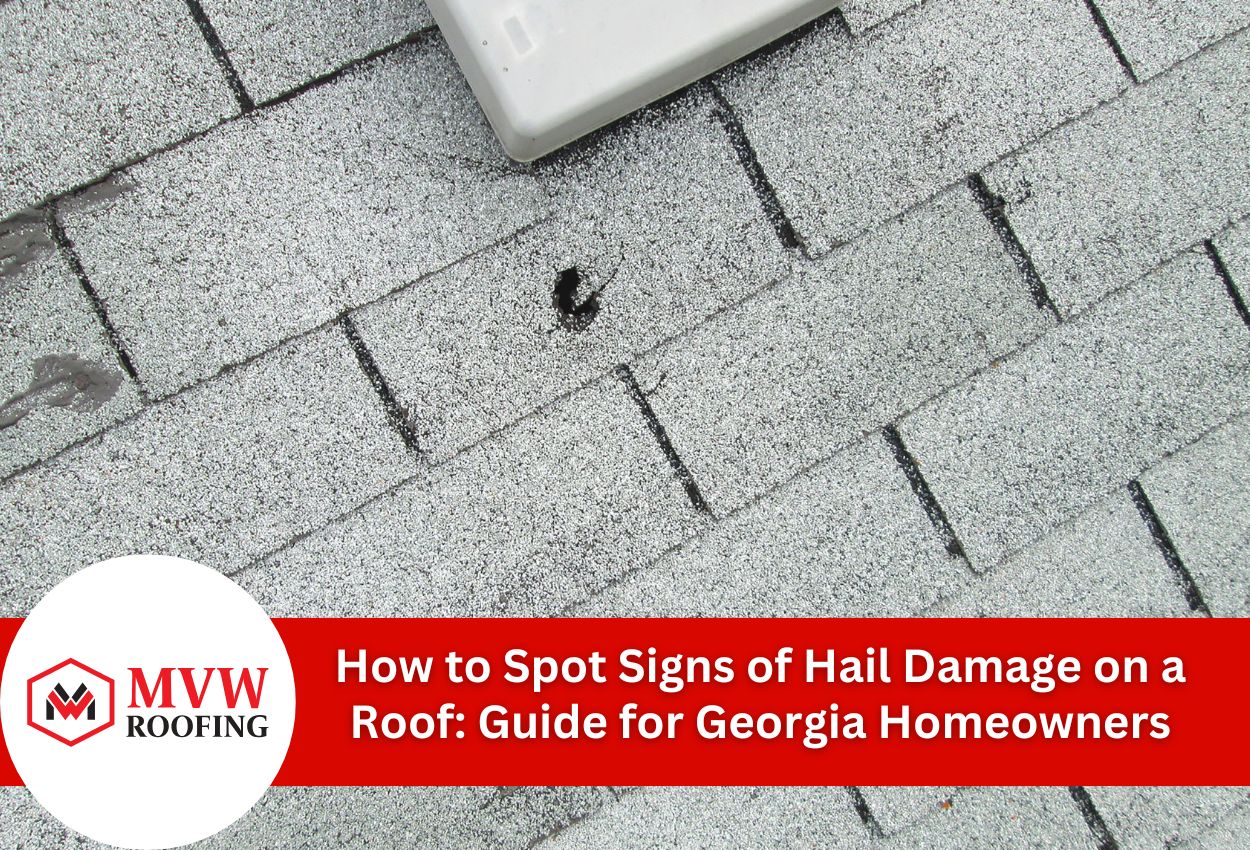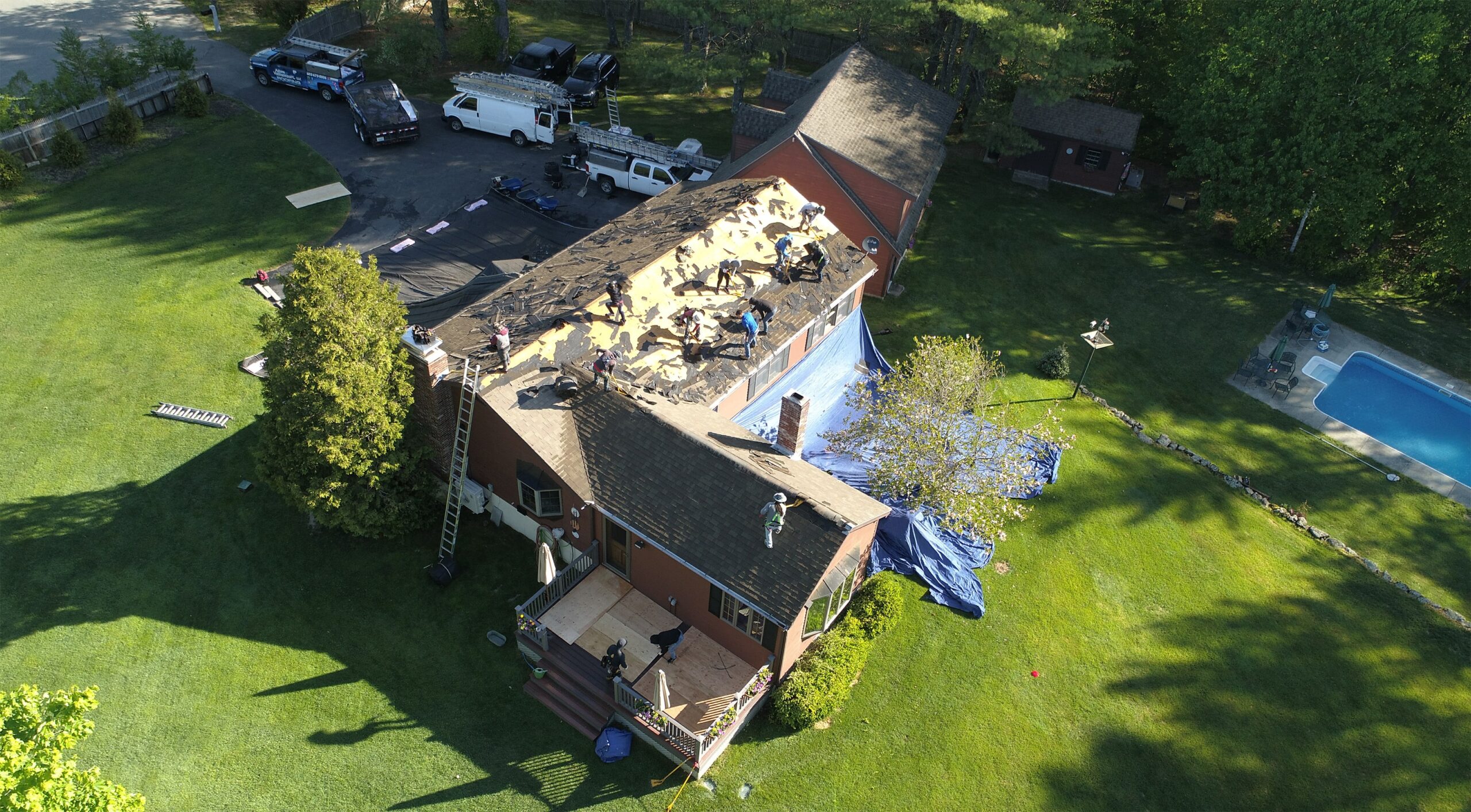What are the Signs You Need a New Metal Roof? What Homeowners Should Know

Metal roofs are built to last decades, but they don’t last forever. Recognizing the warning signs of metal roof deterioration can save homeowners thousands of dollars in repairs and prevent serious damage to their property’s interior and structure.
Most metal roofing problems start small and worsen over time. A minor leak or loose panel might seem insignificant, but can quickly turn into structural problems if not addressed. Water damage, mold growth, and compromised insulation are just a few of the consequences that result from ignoring metal roof replacement indicators.
Southwest Georgia’s challenging climate can accelerate metal roof deterioration. Intense summer heat causes metal panels to expand and contract repeatedly, potentially loosening fasteners and creating gaps. Severe thunderstorms with high winds and hail can cause immediate damage, while persistent humidity promotes rust and corrosion in vulnerable areas.
Understanding when to replace metal roofing systems requires knowing what to look for during regular inspections. Metal roof deterioration often appears gradually, making it easy to overlook until significant damage occurs. Learning to identify these warning signs helps property owners make informed decisions about repairs vs. replacement before small issues become expensive emergencies.
Signs #1. Visible Rust and Corrosion Throughout Your Roofing System
Rust on metal roofing surfaces is one of the most critical indicators that property owners can observe. When protective coatings fail, the underlying steel or iron becomes exposed to moisture and oxygen, creating ideal conditions for oxidation. This process typically begins as small orange or reddish-brown spots that gradually expand across the panels.
Surface rust appears as light discoloration or thin flaking on the metal’s exterior and often develops around fastener points, seams, and areas where water tends to collect. This early-stage corrosion can sometimes be addressed through professional cleaning and recoating treatments. However, deep corrosion in multiple layers of metal creates pitting, holes, or structural weakness that compromises the roof’s integrity.
Different rust patterns provide insight into the extent of deterioration. Uniform surface oxidation across large areas suggests widespread coating failure, while localized deep corrosion indicates specific problem zones where leaks have occurred. Replacing a metal roof is often non-negotiable when rust has created actual holes or when corrosion covers more than 30% of the surface.
A professional inspection helps distinguish between treatable surface issues and advanced deterioration requiring replacement. Metal roof deterioration, like extensive rust, signals that the roofing system has reached the end of its effective lifespan and poses increasing risks to the structure below.
Sign #2. Persistent Leaks and Water Damage Inside Your Home
Water stains on ceilings and walls serve as unmistakable metal roof replacement indicators that need prompt attention. These visible signs typically appear as brown or yellowish discoloration spreading across interior surfaces, often accompanied by peeling paint or wallpaper. When stains appear after rainfall, the metal roofing system has clearly failed to provide adequate protection.
Small leaks create deceptively serious problems that extend far beyond simple water spots. Moisture seeping through compromised metal panels quickly saturates insulation materials, reducing their effectiveness and creating ideal conditions for mold and mildew growth. These organisms can spread rapidly through wall cavities and attic spaces, potentially triggering health issues for occupants while creating persistent odors throughout the home.
Structural damage is generally the most concerning consequence of persistent roof leaks. Water exposure weakens wooden framing members, causing rot, warping, and potential failure of load-bearing components. Ongoing leaks can also compromise electrical systems and damage personal belongings stored in affected areas.
Replacing a metal roof becomes urgent when interior water damage appears. Even seemingly minor leaks indicate significant problems with panel integrity, flashing systems, or fastener failures. A professional assessment helps determine whether localized repairs can address the issue or if comprehensive replacement is the most cost-effective solution for protecting the property from further deterioration.
Sign #3. Loose or Missing Fasteners and Panel Separation
Fastener failures create significant vulnerabilities in metal roofing systems that allow water in and accelerate structural deterioration. Screws and clips that secure metal panels to underlying structures gradually work loose due to thermal expansion and contraction, wind uplift, and natural settling of building components. These loose connections create gaps between panels and the roof deck where moisture can easily enter.
Missing fasteners are an advanced stage of metal roof deterioration that requires immediate professional attention. When screws pull completely free from their mounting points, adjacent panels lose essential support and become susceptible to wind damage. This domino effect often leads to multiple panel failures during severe weather, potentially exposing large sections of the roof structure to rain and debris.
Panel separation occurs when fastener failures allow metal sheets to lift away from their intended positions. Visible gaps between panel edges, raised corners, or sections that appear to flutter during windy conditions indicate that the roofing system has lost its structural integrity. These indicators also signal that repairs may no longer provide adequate protection.
High winds, common throughout the region, place additional stress on already compromised fastening systems. When panel separation and lifting edges have progressed beyond isolated problem areas, replacement may be necessary to maintain reliable weather protection.
Sign #4. Significant Dents and Storm Damage
Hail damage creates lasting impacts on metal roofing systems that extend far beyond visible surface dents. When hailstones strike metal panels, they compress and distort the material, creating shallow depressions that disrupt the roof’s designed water flow patterns. These impact marks alter the panel’s surface geometry, causing water to pool in areas where it should naturally shed toward gutters and downspouts.
Accumulated storm damage from multiple weather events weakens metal roofing systems progressively, even when individual incidents appear minor at the time. Each hailstorm, windstorm, or severe weather event adds stress to panel joints, fasteners, and protective coatings. Small dents and scratches provide entry points for moisture that gradually compromise the metal’s structural integrity through accelerated corrosion processes.
An impact damage assessment requires looking beyond the roof surface. Dents that seem purely cosmetic may indicate underlying problems with panel attachment points and substrate materials. When hailstones create multiple impact marks across roof surfaces, the cumulative effect reduces the system’s ability to resist future weather events and maintain watertight protection.
Multiple storm seasons create compounding damage that transforms minor surface imperfections into serious problems. Professional inspections can identify when accumulated impact damage has reached levels requiring replacement rather than continued repairs. Understanding these metal roof deterioration symptoms allows property owners to make a plan to address storm damage before it leads to more extensive structural problems.
Sign #5. Energy Efficiency Problems and Interior Temperature Issues
Rising cooling costs during summer often signal that metal roofing systems have lost their energy-efficient properties. Metal roofs rely on reflective coatings and insulation to deflect solar heat and maintain comfortable interior temperatures. When these protective elements deteriorate, homes experience increased heat transfer that forces air conditioning systems to work harder and consume more electricity.
Temperature inconsistencies throughout different areas of the home indicate compromised roofing performance that affects overall comfort and energy consumption. Rooms directly beneath damaged roof sections typically become noticeably warmer than other spaces, creating uneven cooling patterns that strain HVAC systems. These hot spots develop when metal roof deterioration symptoms like coating failure or insulation damage allow excessive heat inside.
Compromised insulation represents a serious concern that accompanies advanced metal roofing deterioration. Moisture from leaks or condensation saturates insulation materials, reducing their thermal resistance significantly. Wet insulation loses effectiveness and creates ideal conditions for mold growth while allowing greater temperature transfer between exterior and interior environments.
Monitoring monthly utility bills provides insight into roofing system performance over time. Consistent increases in cooling costs, despite similar weather patterns and usage habits, suggest that the metal roof should be evaluated promptly. Professional energy assessments can identify whether a compromised roof contributes to efficiency problems and determine if replacement offers better long-term value than continued repairs to an underperforming system.
Sign #6. Age-Related Deterioration and Increased Maintenance
When metal roofing systems approach their expected lifespan, property owners often notice escalating repair and maintenance expenses that signal declining performance. Warning signs include recurring issues with the same components, increased service calls, and repairs that provide only temporary solutions. These patterns indicate that the roofing system has entered a phase where ongoing fixes become less effective and more expensive over time.
Tracking annual maintenance expenses shows important trends about roofing system viability. When yearly repair costs begin to approach the value of a new roof, replacement typically offers better financial returns than continued patching.
Advanced deterioration creates cascading problems where fixing one issue reveals additional underlying damage requiring immediate attention. Panel replacement, flashing repairs, and insulation remediation often become necessary simultaneously when aging systems reach critical failure points. These comprehensive repair needs frequently approach or exceed replacement costs while providing only short-term relief from ongoing problems. Professional roofing contractors can help property owners evaluate total ownership costs associated with maintaining aging metal roofing systems vs. investing in a new installation.
Overall, understanding when to replace metal roofing systems prevents expensive emergency repairs and protects long-term property values through proactive decision-making.
Is Your Metal Roof Telling You It’s Time for a Replacement?
If you’ve noticed any of the key signs discussed, such as persistent leaks, visible rust, or increased energy costs, it’s crucial to take action before these issues worsen. In Southwest Georgia, the unique climate can accelerate the deterioration of metal roofs, making quick intervention essential. Protect your home and enhance its longevity with a professional roof inspection and possible replacement.
For expert advice and top-quality service, contact MVW Roofing today at (229) 821-3150. We can spot signs you need a new metal roof, so your home stays safe and well-protected against the elements. Don’t wait — call us to schedule your comprehensive roof inspection!



